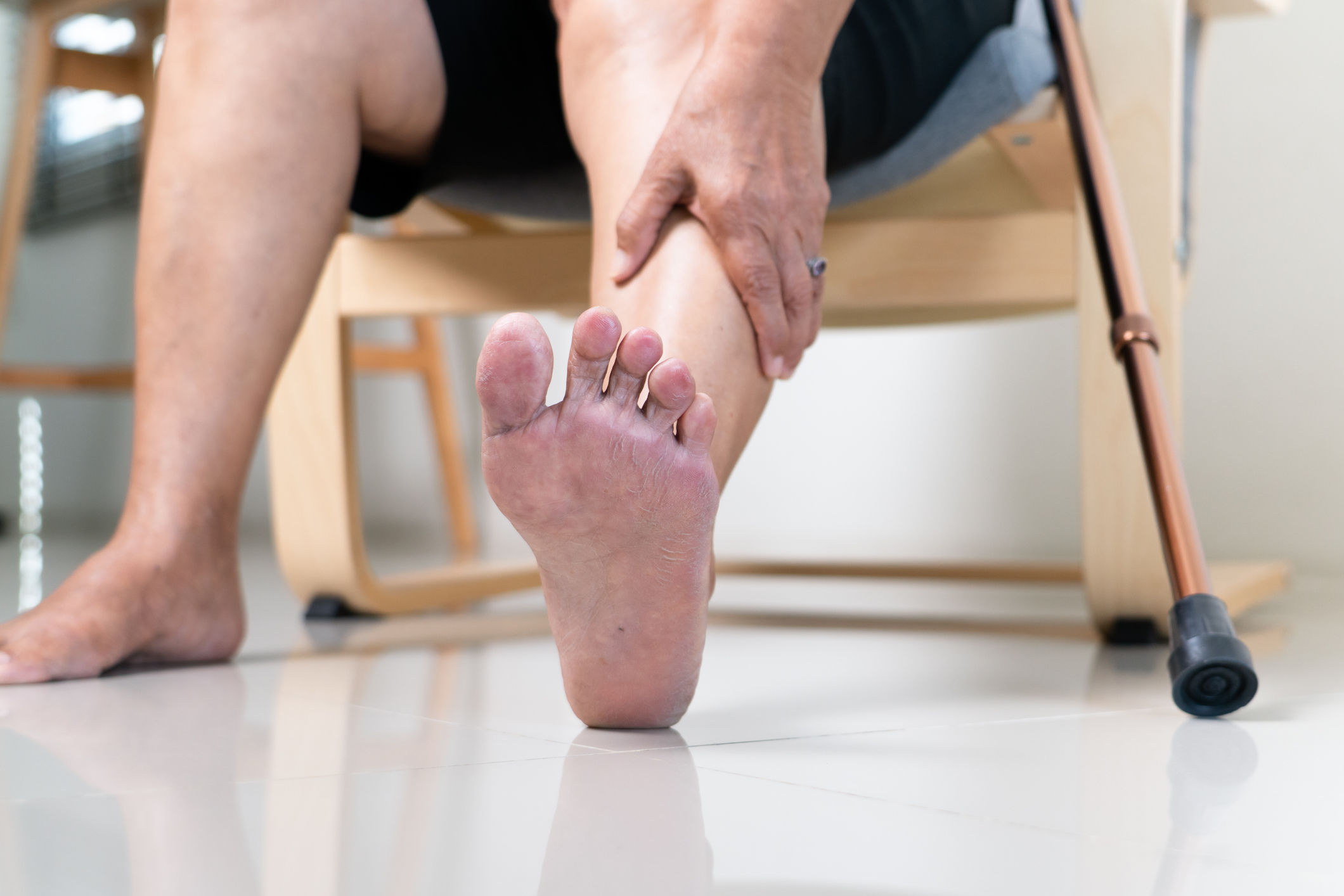As November is American Diabetes Month we wanted to talk about the relationship between Diabetes and Vascular diseases and what you can do to treat wounds related to diabetic foot ulcers.
According to the CDC over 34 million Americans have diabetes and 88 million are prediabetic. Diabetes is caused by having high levels of glucose – blood sugar –in your body. These high levels can cause health problems as there is not enough insulin in the body or the body doesn’t use insulin well enough to move glucose from food into your cells for energy. From a vascular standpoint, too much sugar can adversely affect your arterial walls.
Types of Diabetes
First, let’s understand the different types of diabetes:
- Type 1 diabetes (also referred to as early-onset, juvenile or insulin-dependent diabetes). Children and young adults are most likely to develop the condition over a short period of time (days and weeks). Type 1 diabetes occurs when the pancreas stops releasing insulin. It is treated with insulin injections and a healthy diet.
- Type 2 diabetes (also referred to as late-onset, maturity-onset or non-insulin-dependent diabetes). It is most likely to develop in those over the age of 40 (but can occur in younger people). It is more likely to affect those who are overweight and those with a family history of diabetes. The illness and symptoms of Type 2 diabetes tend to develop gradually (over weeks or months). Unlike Type 1 diabetes, the pancreas still produces insulin, but it may not be as much as the body requires, or the body is not able to use the insulin properly. This is called insulin resistance.
As mentioned, with blood sugar levels being poorly controlled and higher than normal for extended periods, plaque buildup in the arteries leads to narrowing of the artery (atherosclerosis) causing a host of vascular problems.
Diabetes is linked to several vascular diseases:
- EYE: (Retinopathy): Abnormal growth of blood vessels in the back of your eye
- KIDNEY (Nephropathy): Damage to the tiny filtering units of the kidney
- NERVES (Neuropathy): Damage to the nerves (often the feet and toes) causing a burning sensation or numbness.
- ATHEROSCLEROSIS: Generalized hardening of the arteries
- Carotid Artery Disease and Stroke—plaque accumulation in the arteries supplying the brain
- Peripheral Artery Disease (PAD)—narrowing of the arteries to the legs
- Coronary Artery Disease—reduction of blood flow to the heart itself
Risk Prevention for Vascular Disease
The closer your blood glucose level is to normal, the less likely the risk of developing complications. However, you can further reduce your risks by avoiding:
- High Blood Pressure
- Smoking
- Being Overweight
- High Cholesterol Levels
- Unhealthy Diets
- Lack of Exercise
- Stress
Keeping active and eating healthy in order to control blood sugar levels can set you on the path to preventing or reducing vascular disease. The good news is that along with some medications and altering your lifestyle, you may be able to keep your diabetes in check and control any adverse vascular outcomes.
As always, regular medical exams and staying aware of changes or new conditions in your body is important to your overall health. And, if you experience any of the following diabetes-related vascular symptoms, contact your doctor immediately:
- Blurred vision
- Floating spots in your vision
- Unexpected weight gain or swelling in your face or limbs
- Foamy looking urine
- Sores on your feet
- Loss of feeling or burning sensation in your hands or feet
- Pain in your legs when walking
- High blood pressure
- Chest pain
Diabetes and Wounds
If you have diabetes, you are at a higher risk of developing a wound if you have Diabetic Neuropathy, Peripheral Artery Disease (PAD) or other risk factors.
According to the most recent statistics from the National Institute of Health, over 7 million of those affected with diabetes will have a diabetic foot ulcer at some point in their life. If left untreated, these ulcers can lead to infection of the blood (sepsis), bone (osteomyelitis) or tissue (necrotizing fasciitis, ischemia or gangrene) or even amputation.
Risk Factors
Diabetic Neuropathy causes damage to the nerves and can alter sensation. It can either cause increased sensitivity and pain or a complete loss of sensation. Peripheral Arterial Disease causes blockages of the arteries to the legs and feet. When this happens, blood can’t deliver the nutrients and oxygen essential to healing wounds.
Other risk factors include being male, 60+ years or older, having an abnormal shape of the foot including previous amputation or ulcers, difficulty with vision, chronic kidney disease and/or having elevated or uncontrolled blood glucose levels
Caring for a Foot Ulcer
The best way to care for a diabetic foot ulcer is to not get one in the first place! Prevention is key. Follow these steps to reduce the risk:
- Wash your feet daily and use clean, soft, cotton socks.
- Inspect your feet every day. Ask someone to help you or use a mirror on the floor.
- Always wear good fitting supportive shoes. Check the insides before you put them on.
- Never walk barefoot.
- Don’t trim your own nails or remove calluses or lesions by yourself.
- See a podiatrist regularly for nail and foot care.
If you do develop a wound, don’t ignore it! Here are some easy steps to follow to care for your Diabetic Foot Ulcer (DFU):
- Wash daily with soap and water, do not scrub or use any alcohol or peroxide—soap and water are best
- Pat dry
- Use a very small amount of antibiotic ointment and cover with a bandage, change the dressing daily (twice a day if it becomes soiled)
- Try to keep pressure off the wound and don’t step on it if it’s on the bottom of your foot
- Look for signs of infection: fever, pain, redness, warmth, foul odor or drainage
- Remember to always keep it clean, dry and covered (Don’t leave it “open to air” to dry out as this can actually stop the wound from healing)
Make an appointment with your podiatrist if you have ingrown toenails, blisters, plantar warts or athlete’s foot, and especially if you see signs of infection (pain, fever, redness, warmth, foul odor or pus-like drainage).
If the wound doesn’t seem to get better, a visit with one of our vascular physicians may be needed. You should see your doctor if the wound does not show signs of improvement in 2 weeks, if it’s bigger than 2cm, or if the wound is so deep that you see bone.
If you have questions about your diabetic wounds and related treatment, contact one of our board-certified vascular doctors today!









.jpg?width=944&name=Castle-Connolly-Top-Doctors-Emblem-Large%20(4).jpg)